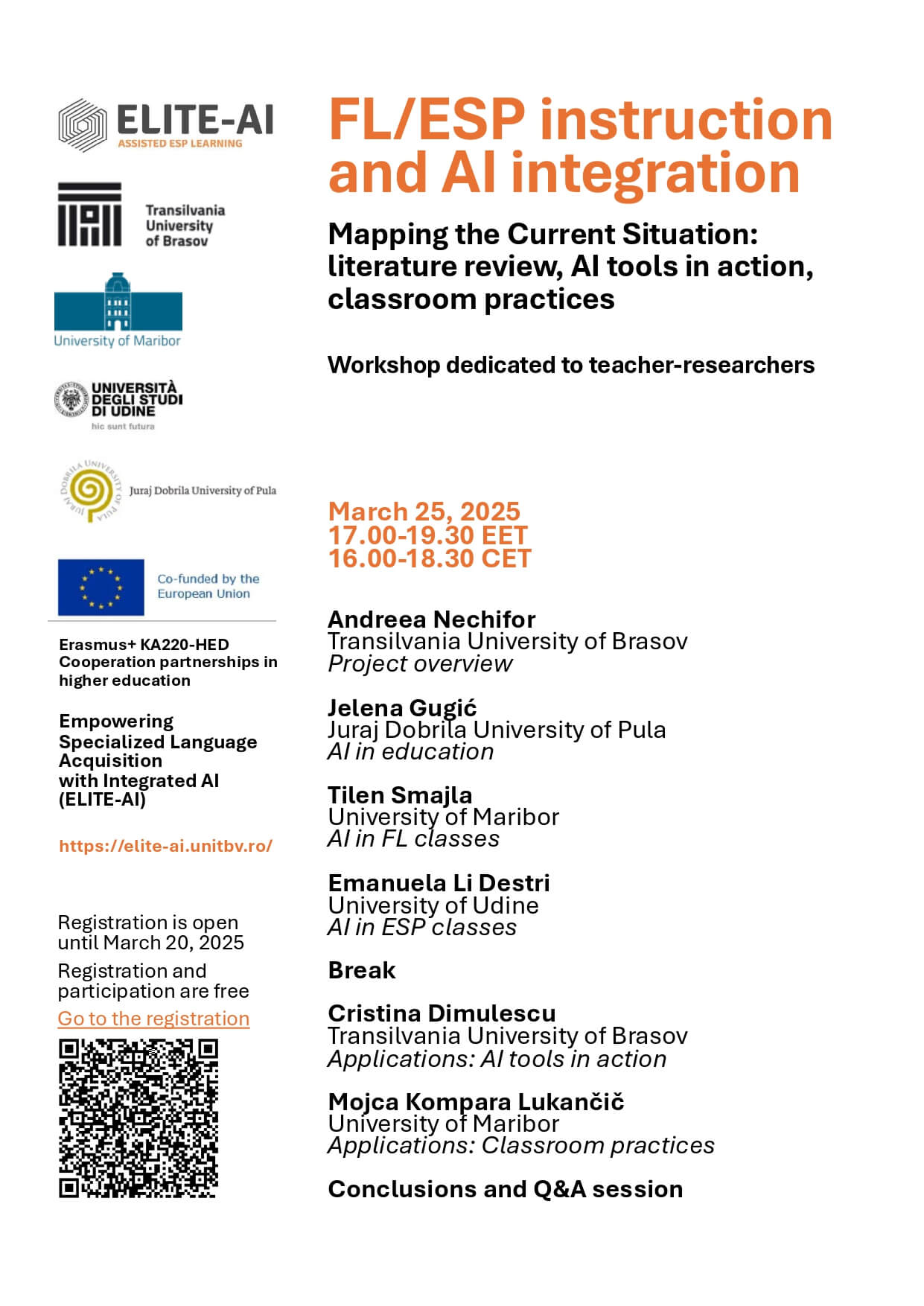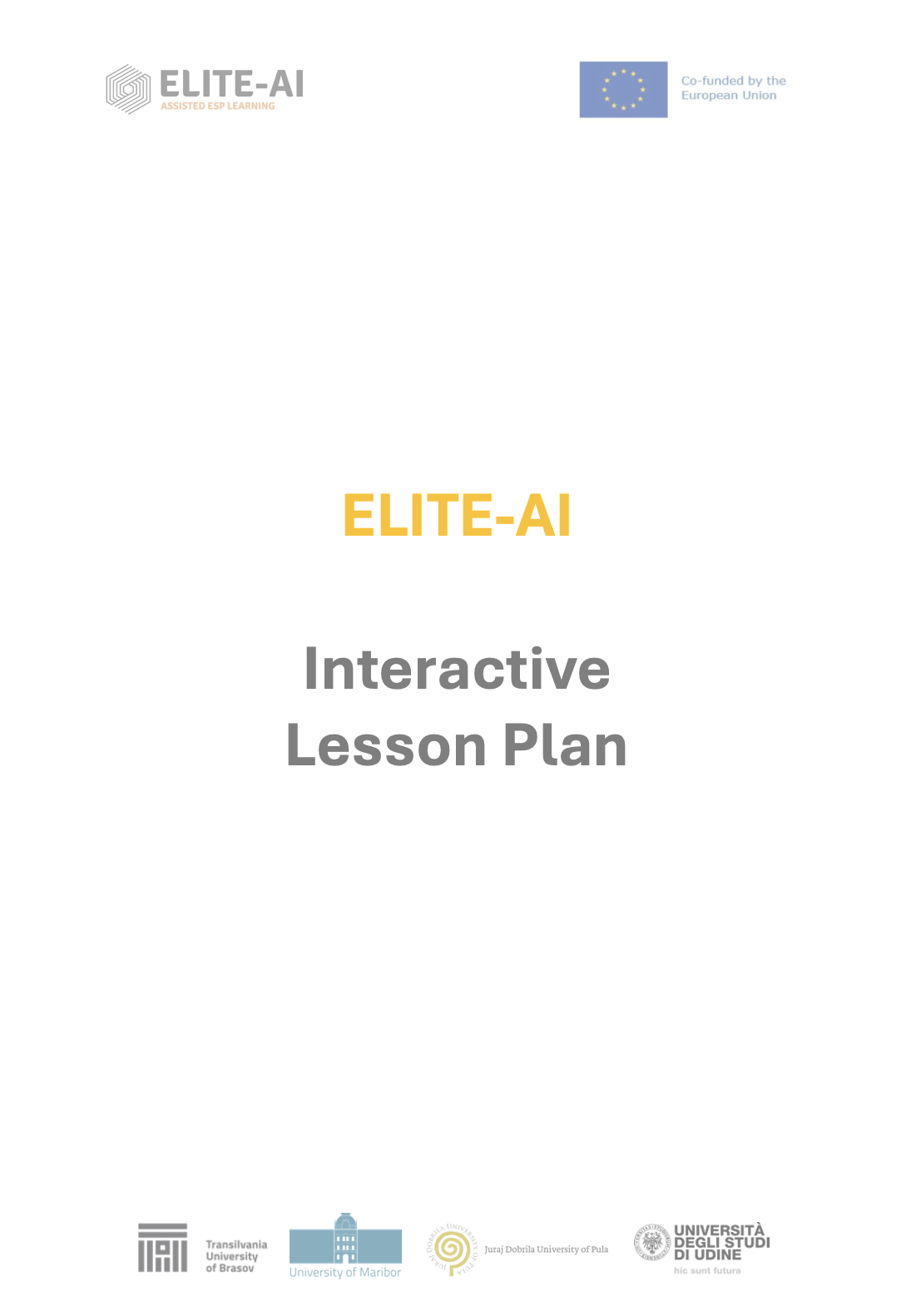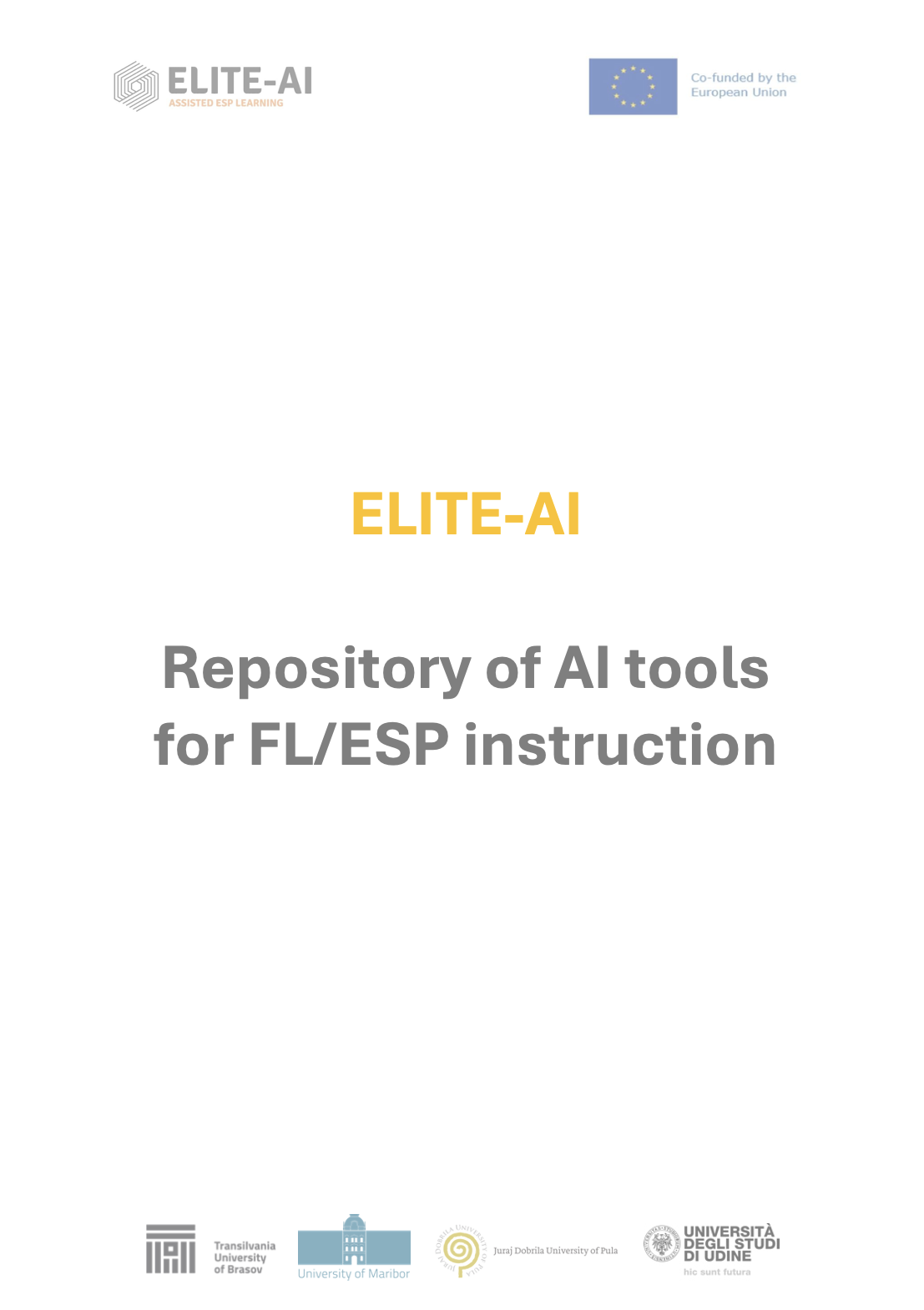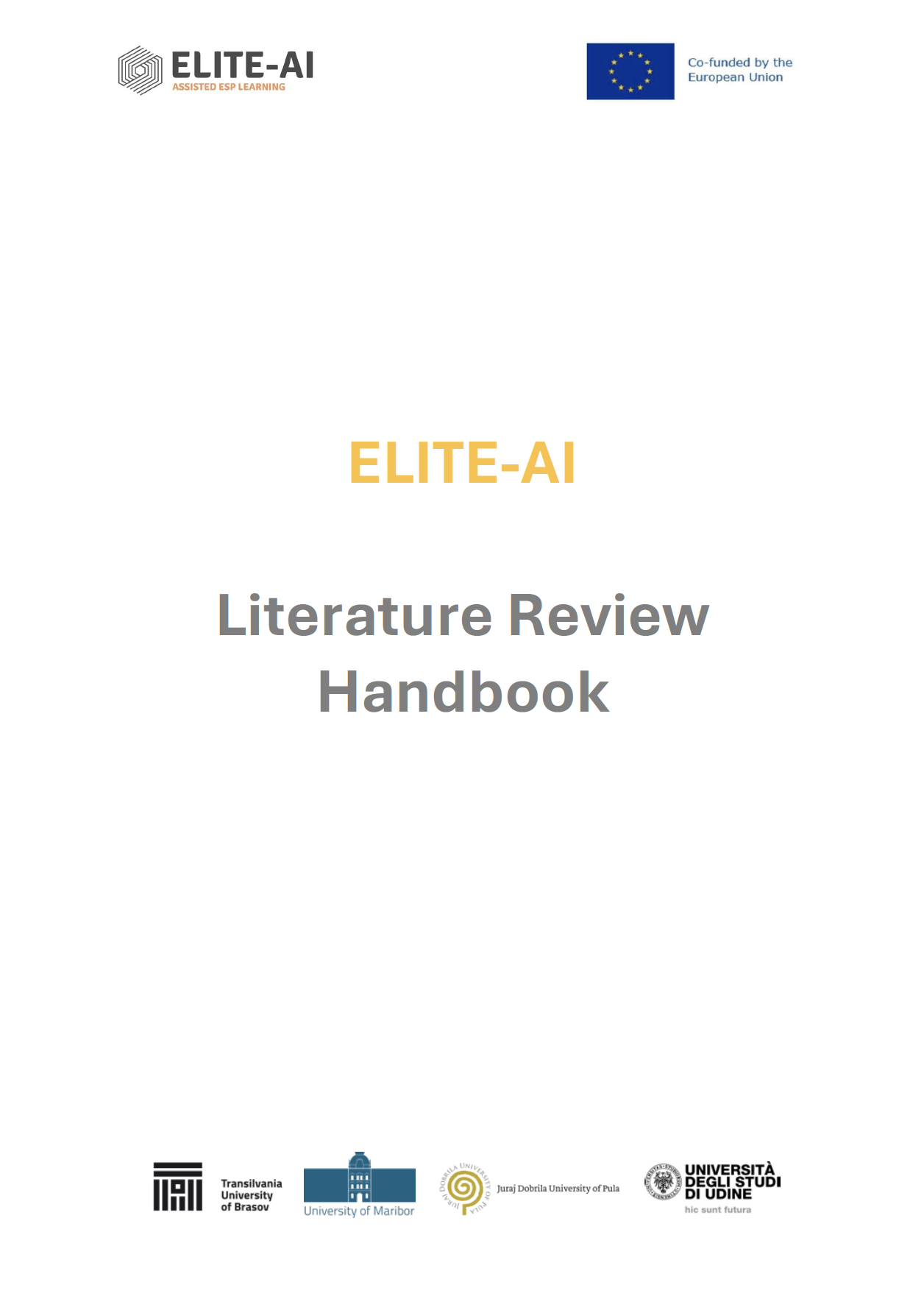
Call for participation
FL/ESP instruction and AI integration Mapping the Current Situation: literature review, AI tools in action, classroom practices
Online workshop dedicated to teacher-researchers
March 25, 2025
17.00-19.30 EET (GMT+2 Bucharest time)
16.00-18.30 (CET)

Interactive Lesson Plan
Building on the foundation of the previously developed repository, this online interactive lesson plan is designed to further systematize AI tools and techniques for Foreign Language (FL) and English for Specific Purposes (ESP) instruction. By structuring AI-supported resources according to their practical applications, this plan enhances accessibility and usability for educators and learners alike.
The lesson plan offers categorized examples of AI solutions, organized by language skills, vocabulary and grammar activities, as well as by different teaching stages. To facilitate implementation, it features an interactive online map that outlines AI techniques specifically designed for FL/ESP language acquisition.
Functioning as a comprehensive database of online educational resources, this tool supports teaching, learning, and assessment in FL/ESP classrooms. As an open-access sample resource, it provides instructors with practical AI-driven strategies to enhance language acquisition and instructional effectiveness.

Repository of AI tools for FL/ESP instruction
Designed as a comprehensive database of AI solutions specifically for FL/ESP instruction, this repository categorizes resources based on language skills, topics, and teaching approaches. It is the result of both an in-depth literature review and the hands-on experience of project partners, who have explored AI tools to identify activities, tasks, and instruments best suited for FL/ESP language classes.

Current Ecosystem Analysis Literature review
Designed for educators at all levels, from beginners to experienced practitioners, this Handbook sets the stage for innovative AI-driven approaches in language acquisition. By presenting the latest good practices and mapping existing research, it empowers educators to capitalize on the potential of AI, enabling more effective and engaging language learning experiences for students.
Structured as a theoretical guide, the Handbook begins with an overview of AI in education, progresses to its applications in EFL classes, and concludes with ESP instruction. Each partner institution contributed by summarizing over 20 scholarly materials, compiling extensive bibliographical lists, and drafting practical worksheets for language instructors. This collaborative effort aims to bridge the gap between theory and practice, offering clear guidelines for integrating AI into FL and ESP classrooms.

